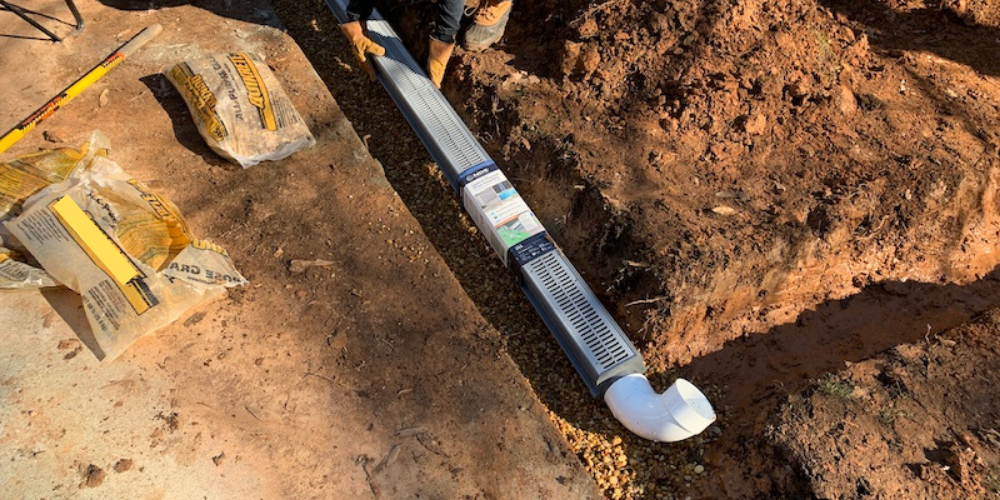Channel and trench drains are types of drainage systems that are commonly used to manage surface water and prevent flooding in a variety of settings, including commercial, industrial, and residential areas. Here is an overview of each type of drain:
- Channel Drains: A channel drain, also known as a linear drain, is a long, narrow drainage system that typically runs parallel to a surface, such as a sidewalk or driveway. It is made up of a channel, usually made of concrete or plastic, and a removable grate or cover that allows water to flow into the channel. The channel is usually installed below ground level to collect water and direct it to a drainage pipe or collection basin. Channel drains are commonly used in areas with heavy rainfall, such as parking lots, driveways, and patios.
- Trench Drains: Trench drains are similar to channel drains, but they are wider and deeper. They are typically used in areas with a high volume of surface water, such as parking garages, loading docks, and industrial facilities. Trench drains are typically made of concrete and have a V-shaped or U-shaped channel that directs water to a collection basin or drainage pipe. They are often installed in areas where heavy equipment, such as forklifts or trucks, will be operating.
Both channel & trench drains can be used to effectively manage surface water and prevent flooding, but they have different applications depending on the specific needs of the project. Proper installation, maintenance, and cleaning of these drainage systems are important to ensure their effectiveness and longevity. It is important to consult with a professional contractor or engineer to determine the best type of drain for a specific project and to ensure that the installation is done properly
Installing manhole chambers is important during the construction of the property
Installing manhole chambers during the construction of a property instead of after completion is an important consideration for several reasons:
- Future Access: Installing manhole chambers during the construction of a property can provide future access to underground infrastructure, such as pipes, cables, and other utilities. This can make it easier and more cost-effective to perform maintenance, repairs, and upgrades on the infrastructure.
- Compliance: Depending on local regulations, manhole chambers may be required to be installed during construction to comply with building codes and zoning laws. Failure to comply with these regulations can result in fines or other penalties.
- Safety: Installing manhole chambers can help ensure the safety of workers who may need to access the underground infrastructure in the future. This can help prevent accidents and injuries.
- Aesthetics: Installing manhole chambers during construction can also help ensure that they are integrated into the design of the property in a way that is aesthetically pleasing and minimizes the impact on the surrounding area.
Nonetheless, installing manhole chambers during the construction of a property is an important consideration that can provide numerous benefits, including improved access to underground infrastructure, compliance with regulations, enhanced safety, and improved aesthetics. It is important to work with a licensed contractor or engineer to ensure that the manhole chambers are installed properly and meet all necessary requirements.
